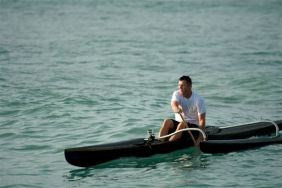 Kayaking is a great way to enjoy both the warm weather and the outdoors while getting exercise. Sometimes, though, your kayaking adventures find you facing whitewater, which is where some skill and know-how will come into play. Today we’ll take a look at a few tips for whitewater kayaking.
Kayaking is a great way to enjoy both the warm weather and the outdoors while getting exercise. Sometimes, though, your kayaking adventures find you facing whitewater, which is where some skill and know-how will come into play. Today we’ll take a look at a few tips for whitewater kayaking.
Your body consists of separate parts, and one key to mastering whitewater kayaking is learning how to utilize them independently. Allow your upper and lower body work independently of, yet cooperatively with, each other. Doing this requires a distinct separation of movements at your hips. Initially, this applies to leaning forward and backward, which you’ll swiftly grow comfortable with after some practice. As you progress, this technique will become a key ingredient of balancing your boat on edge and staying ahead of it as it spins.
It takes more than just your arms to optimally propel your kayak through the water. Harnessing the power in your torso will play a vital role in this. Utilizing the large muscle groups in your torso will maximize the strength of each powerful stroke. Doing so will also improve your stamina, as the work will be spread over more muscles.
Properly using your torso involves winding your body, planting the pivot blade, and then unwinding your body. To wind up, turn your upper body at the hips in the direction you want to go. Once your body is wound up, plant your paddle blade completely in the water as a pivot. As you push or pull on the pivot, draw on your stomach muscles to force your body back to its rested position. Turning your whole torso allows you to reach as far back as you want with a blade and still be in a safe position, while at the same time harnessing more power for your strokes. Aside from propelling your kayak, rotating your torso will also protect your shoulders from injury.
Kayaks can be at the mercy of the rapids if you’re not careful. True control comes from having an active blade in the water. Having a blade in the water allows you to take an active role in deciding what your boat will do, rather than reacting to the things that happen to it. Much of this entails placing your next stroke in the water as soon as the one you are taking is finished. Keep this rule in mind and you’ll excel at keeping a straight line and punching through rapids.
Some people may panic at the sight of rapids, but the tips outlined above will help you keep control of your kayak as you hit whitewater. Stay calm and be intentional with your movements, and you’ll find that a bit of whitewater when you’re kayaking is nothing to be scared of.








